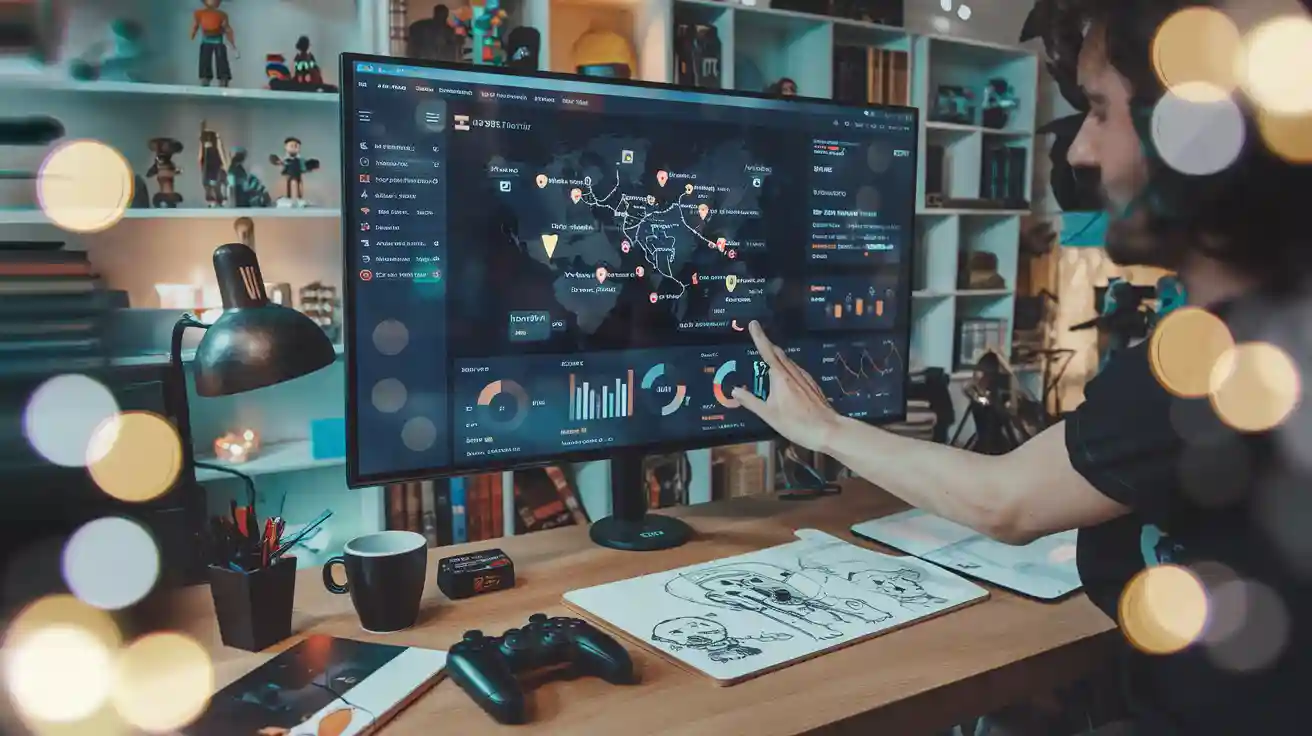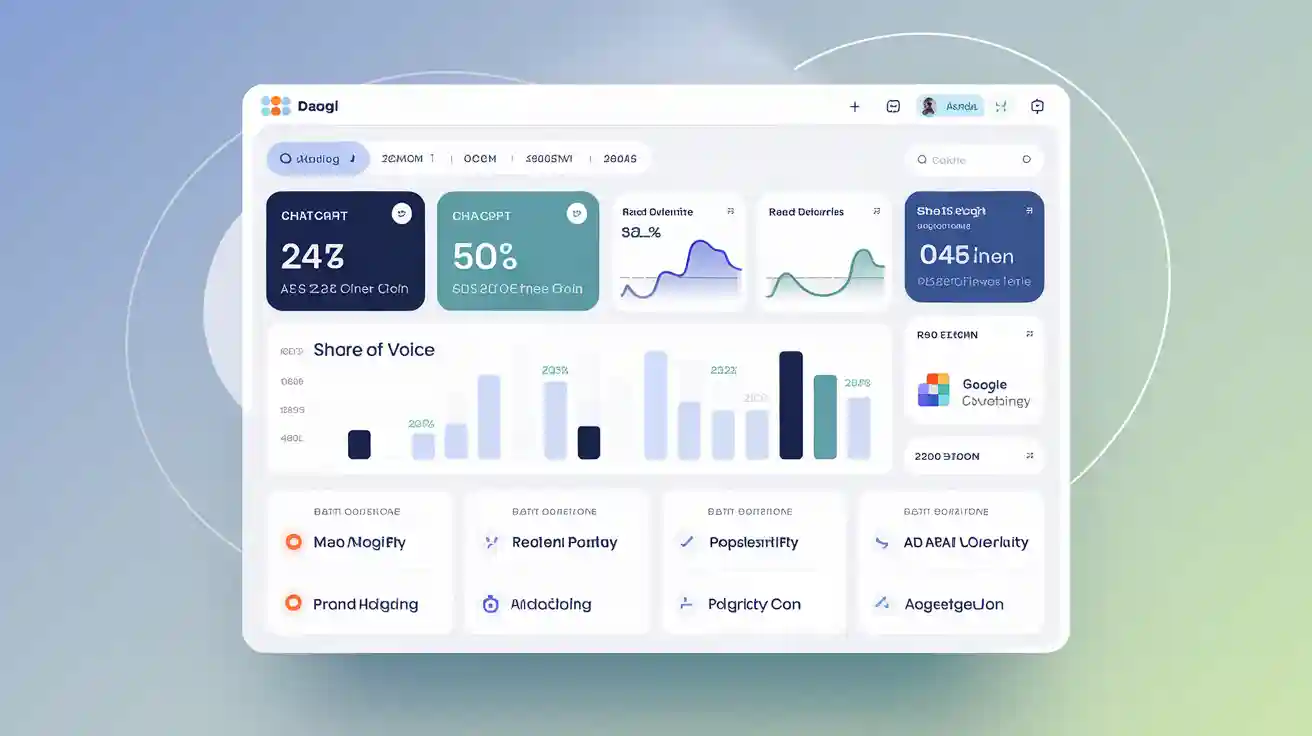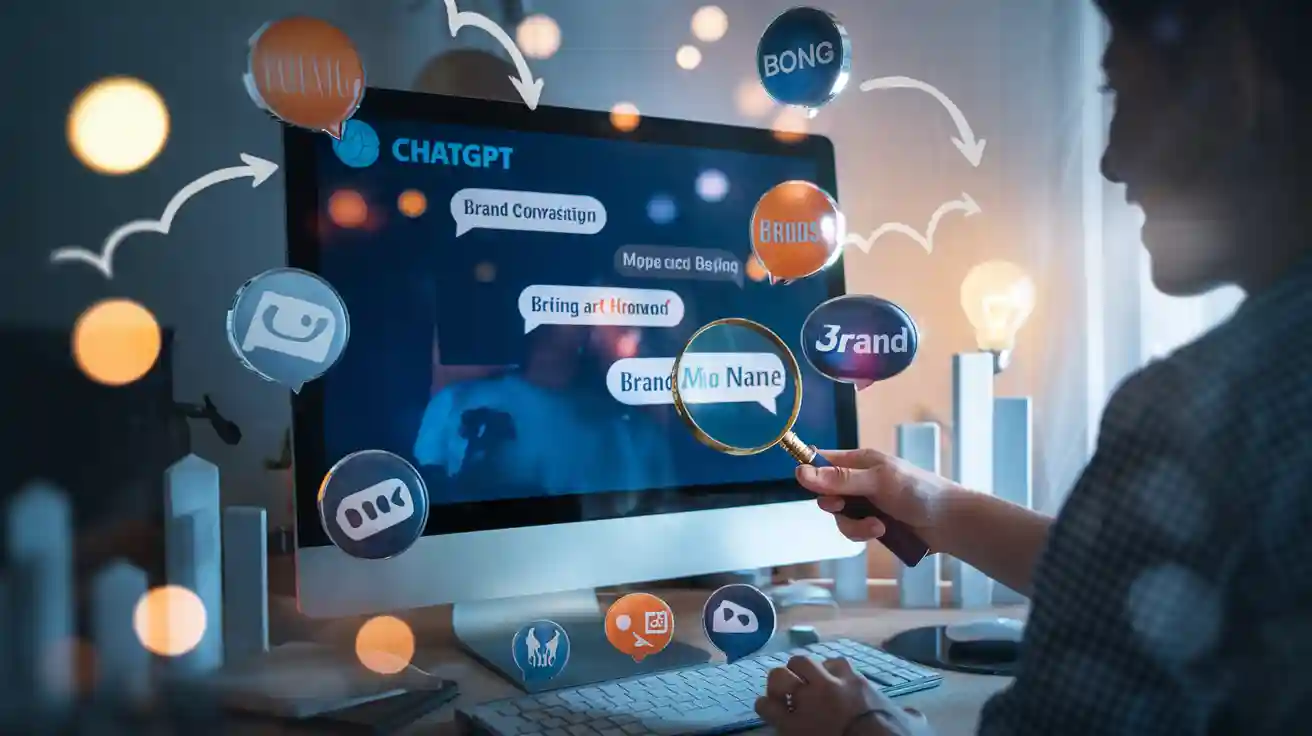Level-Up Visibility: GEO for Upcoming Indie Game Launches
Level-up visibility for your indie game launch with GEO strategies. Build fanbases, optimize platforms, and boost engagement to ensure a successful debut.


Launching your indie game can feel like tossing a pebble into a vast ocean—how do you make waves? This is where GEO, or Game Exposure Optimization, comes in. It’s a strategic framework designed to help you level-up visibility and connect with the right audience. Visibility isn’t just a buzzword; it’s the lifeline of your launch. The indie game market is growing fast, with projections showing it could hit $10.71 billion by 2030. To stand out, you need engagement, wishlists, and a community that’s excited about your game. GEO gives you the tools to make that happen.
Key Takeaways
GEO helps indie games get noticed by the right people. Use clever marketing to create excitement and loyal fans before launch.
Talk to your community on sites like Discord and Reddit. Share news and let fans join in the process to build support.
Make a cool trailer and website. These are the first things people see, so make them fun and clear to draw in players.
Understanding GEO and Why It Matters
What is GEO?
Game Exposure Optimization (GEO) helps your indie game get noticed. Think of it as a guide to connect with players and make your game popular. GEO uses smart plans to show your game to the right people at the right time. It’s not just about ads—it’s about getting people excited and building a group of fans who can’t wait for your game.
When you improve exposure, you’re not just getting attention—you’re setting up for future success. For example, Eric Barone, who made Stardew Valley, built a fanbase before the game launched. This early support helped the game sell over 20 million copies. GEO helps you do the same by mixing good marketing, fan engagement, and platform strategies.
Why Visibility Matters for Indie Games
Visibility can decide if your indie game succeeds or fails. Without it, even a great game might be forgotten. But with visibility, you can grow a fanbase and boost sales.
Here’s why it’s important:
A strong online fan group and active social media help your game get noticed.
Players sharing ideas and feedback creates excitement and grows your audience.
Working with influencers for reviews and shoutouts spreads the word about your game.
Websites like Reddit, Discord, and Twitter are great for building buzz before your game launches. Talking to these groups helps you connect with players and fix visibility problems early. Good marketing is what makes some indie games succeed while others struggle.
Visibility isn’t just about being seen—it’s about being remembered. When players feel close to your game, they’ll share it, talk about it, and help it grow. That’s the magic of GEO.
Pre-Launch Strategies to Boost Game Visibility
Growing a Community Before Launch
Building a community early is like planting seeds. These seeds grow into fans who care about your game. They’ll cheer for you when it’s time to launch.
First, find out where your audience spends time online. Are they on Discord? Do they like Reddit gaming groups? Once you know, join those spaces and start chatting. Share sneak peeks, artwork, or updates about your game. People enjoy feeling included in the process.
Set clear goals to track your progress:
Goal Type | Target to Achieve |
|---|---|
Email List | |
Website Visits | Get 3000 visits to your site in the last month. |
Media Coverage | Appear in 20 gaming news articles. |
Social Media Engagement Rate | Reach a 60% engagement rate on posts. |
These goals show how well your community-building is working.
Look at success stories for ideas. For instance, Xion CyberX eBike got 23,000 emails before launching on Indiegogo. This helped them earn $800,000 in sales. Imagine what this could mean for your game!
Making a Great Game Trailer and Website
Your trailer and website are like your game’s front door. They’re the first thing people see, so make them awesome.
A good trailer doesn’t just show gameplay—it tells a story. Show what makes your game special and connect with viewers emotionally. Keep it short, around 1-2 minutes, and end with a message like “Wishlist on Steam” or “Join our Discord.”
Your website should be just as exciting. Add a clear game description, cool visuals, and easy-to-use menus. Include a sign-up form for fans to join your email list.
Here’s a tip: Tell your story on your website, like on Kickstarter. Share why you love making games and what inspires you. People enjoy supporting creators who are real and passionate.
Using Social Media and Branding
Social media is more than a tool—it’s your loudspeaker. Platforms like Twitter, Instagram, and TikTok can help you connect with players and get noticed.
Create a brand that looks the same everywhere. Use the same colors, fonts, and style in all your posts. This helps people remember your game.
Post often, but don’t just talk about your game. Share behind-the-scenes moments, ask questions, and chat with followers. For example, post a poll asking which character design fans like best. This makes fans feel involved and excited.
Work with influencers to reach more people. A popular streamer talking about your game can bring in lots of new fans.
Remember, social media is about making friends, not just selling. When you talk to your followers, you’re building a group that will stick with your game even after it launches.
Using Platforms and Communities
Making the Most of Steam, itch.io, and Epic Games Store
Platforms like Steam, itch.io, and Epic Games Store help your game reach players worldwide. Setting up a great store page can really boost your game’s visibility. Add clear, exciting screenshots, a fun description, and a button like “Wishlist Now.”
Steam is a top choice for indie games. Use its community tools to talk with players. Share updates, answer their questions, and post behind-the-scenes content. itch.io works well for creative or unique games. It lets you show off your style. Epic Games Store is newer but gives great attention to selected games.
Pro Tip: Use tags and categories smartly. They help players find your game faster. Also, think about adding a demo. Players enjoy testing games first, and demos can increase wishlists and sales.
Joining Gaming Communities on Reddit, Discord, and Twitter
Gaming communities are where your fans hang out. Places like Reddit, Discord, and Twitter are perfect for connecting with them and spreading the word about your game.
Talking with these groups builds friendships and spreads excitement.
Special deals from creators can bring in new fans.
Influencers can help your game get tons of views and likes.
On Reddit, share updates and ask for ideas. Use Discord to host Q&A chats or game tests. Twitter is great for real conversations and building trust.
Platform | How to Connect |
|---|---|
Reddit (r/boardgames) | |
Discord Servers | Host live chats or game testing events |
General | Be real and consistent to build trust and loyalty |
By being active in these spaces, you’re not just promoting your game. You’re creating a group of fans who will support you before and after your launch.
Influencer and Media Outreach
Reaching Out to Influencers and Streamers
Influencers and streamers can amplify your game’s visibility. They’re like megaphones for your brand, helping you reach a wider audience. Start by identifying creators who align with your game’s style and values. Look for those who share content similar to your genre or have an audience that matches your target players.
When reaching out, keep it personal. Don’t send generic messages. Instead, mention why you think your game fits their channel. Share a short pitch and offer them something exclusive, like early access or behind-the-scenes content. This makes them feel valued and excited to share your game.
Timing matters. Contact influencers a few weeks before your launch. This gives them time to explore your game and create authentic reviews. Remember, their audience trusts them, so genuine enthusiasm can lead to more players checking out your game.
Pro Tip: Focus on micro-influencers. They may have smaller followings, but their engagement rates are often higher. This means their audience is more likely to take action, like wishlisting your game.
Crafting Effective Press Kits and Pitches
A press kit is your game’s resume. It tells media outlets why your game deserves attention. Include high-quality screenshots, a compelling trailer, and a short description of your game. Add a fact sheet with key details like the release date, platforms, and pricing.
Your pitch should be clear and exciting. Start with a hook that grabs attention. For example, “Ever wondered what it’s like to survive in a post-apocalyptic world with only a robot companion? Our game, RoboSurvivor, lets you find out!” Keep it short and focus on what makes your game unique.
Send your press kit to gaming websites, blogs, and YouTube reviewers. Follow up politely if you don’t hear back. Building relationships with media outlets can boost your brand and help your marketing plan succeed.
Note: Make your press kit easy to download. Use platforms like Google Drive or Dropbox to share files. This ensures journalists can access everything quickly.
Paid Advertising and SEO for Indie Games
Using Paid Ads on Google, Facebook, and YouTube
Paid ads help your game get noticed quickly. Platforms like Google, Facebook, and YouTube let you show your game to the right players. These sites have billions of users, so you can reach gamers who might love your game.
Google Ads puts your game at the top of search results. Imagine someone searching "cool indie games" and finding yours first. Facebook is great for fun ads like short videos or Reels. These can bring more people to your game’s page. YouTube works well for showing your trailer. Video ads can make more people buy your game, boosting results by up to 80%.
Why do paid ads work?
They make your game visible fast, especially during launch.
They bring traffic quicker than methods like SEO.
They target players by age, interests, and gaming habits.
Check how well your ads are doing by tracking clicks, views, and sales. Tools like Google Analytics and Facebook Insights show what’s working and what needs fixing.
Basics of SEO for Game Websites
SEO helps your website show up in search results. It’s slower than ads but gives long-term benefits. Players can find your game easier when your site ranks higher.
Use keywords that match what players search for. If your game is a survival RPG, add phrases like "best survival RPGs" or "indie survival games" to your site. Put these words in titles, descriptions, and blog posts.
Here’s how to improve SEO:
Fast Loading Speed: Players leave slow websites.
Mobile-Friendly Design: Many gamers use phones to browse.
High-Quality Content: Write blogs about your game’s story or characters.
Backlinks: Get other sites to link to your game’s page.
Track your progress with tools like Google Analytics. These show how many people visit your site and which pages they like most. Over time, good SEO brings steady traffic to your game.
Post-Launch Visibility Boosters
Staying Connected with Your Players
Your job isn’t done after launch. This is when the real work starts—building a strong community around your game. Players want to feel connected to the game, you, and other fans. By creating these bonds, you keep the excitement alive and make sure your game stays popular.
Set up places where players can hang out. Discord is a great option for this. It gives players a space to share tips, talk about the game, and report bugs. It also lets you talk directly to your audience. Host fun activities like Q&A sessions or in-game contests. These events make players feel included and part of the journey.
Social media is another great way to connect. Talk to your fans on Twitter or Instagram to keep your game fresh in their minds. Reply to comments, post fan art, and celebrate big moments together. Let players create their own content, like videos or mods. This builds stronger connections and gives your game free promotion.
Here’s how these ideas help your game:
Strategy | How It Helps |
|---|---|
Player Spaces | Discord hubs bring players and developers closer. |
Fun Activities | Contests and Q&As build stronger bonds with players. |
Social Media Interaction | Talking online helps grow your audience and community. |
Player Content | Fan-made content boosts engagement and spreads the word. |
When you focus on your community, you’re not just keeping players happy. You’re building a loyal group of fans who will support your game for years.
Adding New Content and Updates
Keeping your game exciting is important. Players love surprises, and updates give them reasons to return. New levels, characters, or events keep your game fun and help it stand out in a crowded market.
Listen to what your players want. They often have great ideas for updates or fixes. Use surveys or polls to hear their thoughts. This shows you care about their opinions and helps you plan better updates.
Game data can also guide you. Analytics show what players enjoy most, so you can focus on those features. For example, if one game mode is popular, expand it. Social media feedback can also tell you how players feel about updates.
Here’s why updates matter:
Seasonal events add excitement to gameplay.
Limited-time rewards make players want to join in.
Streaming platforms like Twitch can help too. Watching streamers try new updates can inspire others to play. This spreads excitement and brings in more players.
Even small changes matter. Fixing bugs, balancing gameplay, or adding small improvements shows players you care. These tweaks may seem minor, but they make a big difference in how players see your game.
Here’s a quick look at how updates help your game grow:
Metric | Growth Rate |
|---|---|
Event Attendance Growth Rate | |
Historical Attendance Rate | 75% |
Month-over-Month Attendance Increase | 20% |
By updating and improving your game, you keep current players happy and attract new ones. Regular updates show that your game is active and improving, which is exactly what players want.
Getting your game noticed is super important. Before launch, focus on building a fan group, making an awesome trailer, and using social media to spread the word. After launch, stay in touch with players and add updates to keep them excited.
GEO helps you track how well you're doing with these key stats:
KPI | What It Shows |
|---|---|
Average Order Value (AOV) | Tracks how much money each customer spends per order. |
Revenue Per User | Checks how much money each player brings in overall. |
New vs. Returning Buyers | Compares new players to loyal ones to see who comes back. |
Conversion Rate by Channel | Measures which ads or platforms turn visitors into buyers. |
Lifetime Value (LTV) | Predicts how much money a player will spend over time. |
Don’t wait! Start boosting your game’s visibility now and see it succeed!
FAQ
How can I tell if my visibility plan is working?
Check numbers like wishlists, site visits, and social media likes. Tools like Google Analytics show how well you're doing.
Should I choose paid ads or grow naturally?
Do both. Paid ads work fast, but natural growth lasts longer. Split your money and time to get the best results.
Can I do well without influencers?
Yes, but influencers help you reach more people. If they’re too pricey, focus on making friends with players and building a fan group.
See Also
Local Guides That Excel in Maps and AI Insights
The Impact of OpenAI’s Search Tool on GEO Dynamics
Effective Strategies for Enhancing Multilingual GEO in AI
Understanding the Differences Between GEO and AEO Techniques
Creating AI-Optimized Review Snippets for Enhanced GEO in 2025




